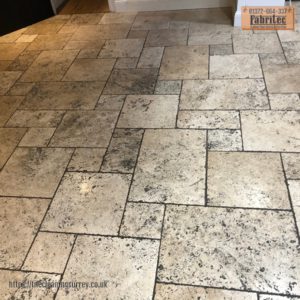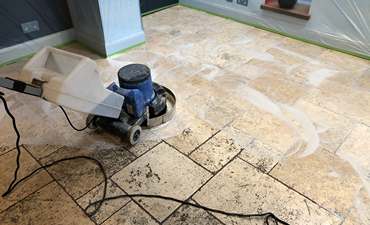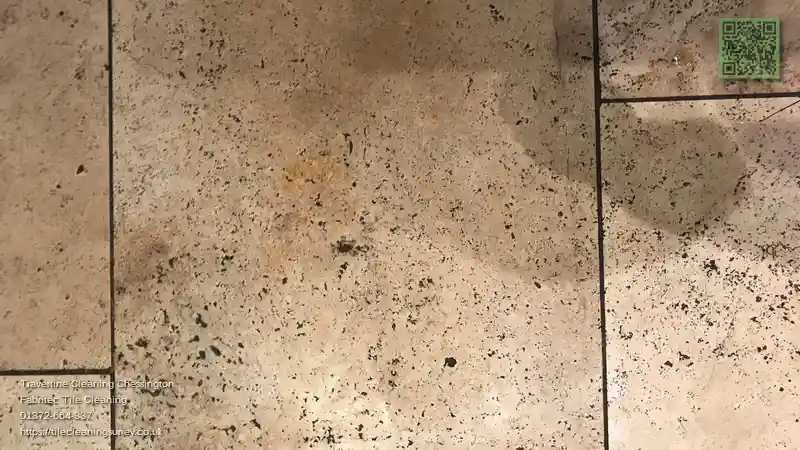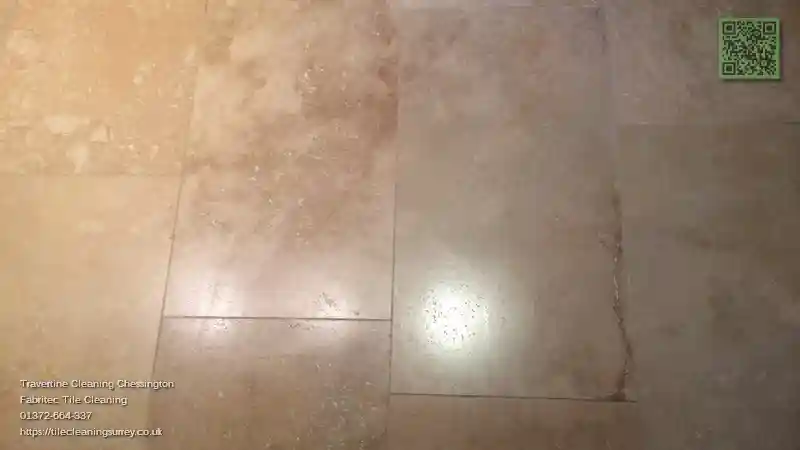Ultimate Guide to Restoring and Maintaining Your Stunning Travertine Floors
Travertine floors are celebrated for their luxurious appearance and timeless beauty, making them a favored option among homeowners. However, due to the porous nature of Travertine, issues such as dirt buildup, staining, and a gradual loss of shine can occur over time. Standard cleaning methods often fall short, leading homeowners to seek answers to some crucial questions:
- How can I effectively restore the original shine and beauty of my travertine floors?
- Which cleaning products are best suited for maintaining the integrity of travertine floors?
- What methods do professionals use to clean travertine without causing any damage?
- Is it necessary to seal my travertine floor, and how often should sealing be performed?
If maintaining the pristine condition of your travertine surfaces feels overwhelming, seeking professional assistance may be the perfect solution. At Fabritec Tile Cleaning, we specialize in rejuvenating travertine floors to restore their original beauty and elegance. In this guide, we will delve into our comprehensive professional cleaning process and provide you with insightful tips to effectively care for your travertine floors.
Recognizing the Special Care Requirements of Travertine Stone
Travertine is a distinctive type of limestone that develops natural holes and cavities during its formation. While these natural features add to the unique aesthetic of travertine, they also make the stone particularly absorbent. This inherent quality demands special care and attention to preserve both the beauty and longevity of your travertine floors.
Common Challenges Encountered with Travertine Flooring
- Accumulation of dirt and grime: The porous structure of travertine allows dust and debris to become trapped within its surface, giving the floors an unkempt appearance.
- Etching and dullness: Contact with acidic substances, such as lemon juice or vinegar, can inflict surface damage that causes the stone to lose its shine.
- Cracking and chipping: Heavy foot traffic or exposure to moisture can weaken travertine, resulting in cracks and chips over time.
- Mold and mildew growth: Areas with high moisture, like bathrooms, kitchens, and outdoor pavers, are especially prone to issues related to mold and mildew.
Using incorrect cleaning methods can worsen these issues, making professional deep cleaning and sealing essential for the upkeep of your travertine floors.
Thorough Professional Cleaning Process for Travertine Surfaces

At Fabritec Tile Cleaning, we implement a detailed, multi-step approach to effectively rejuvenate the beauty of travertine surfaces.
1. Thorough Assessment and Inspection of Your Travertine Flooring
The path to professional cleaning starts with an in-depth evaluation of the travertine surface. Our team inspects:
 Stains and discolorations
Stains and discolorations Cracks, chips, or areas of missing grout
Cracks, chips, or areas of missing grout Sections with significant dirt buildup
Sections with significant dirt buildup Signs of moisture damage or mold presence
Signs of moisture damage or mold presence
This comprehensive assessment allows us to create a tailored cleaning strategy that caters to the unique conditions of your floor.
2. Application of pH-Neutral Cleaning Solutions for Effective Pre-Treatment
Before we initiate deep cleaning, we apply a specially formulated pH-neutral stone cleaner. Unlike standard floor cleaners, this solution is designed to break down dirt and stains without risking damage to the stone.
Benefits of Using pH-Neutral Cleaners
- They prevent etching and dulling of the surface.
- They penetrate deeply into the stone's pores to effectively remove dirt.
- They leave no harmful chemical residues that can affect the stone’s integrity.
3. Advanced Deep Cleaning Utilizing High-Powered Equipment

Once the cleaner has loosened the dirt and grime, we utilize rotary scrubbing machines equipped with soft-bristle brushes to extract deeply embedded debris. These advanced machines:
 Safely remove deep-seated grime without scratching the surface.
Safely remove deep-seated grime without scratching the surface. Access the stone’s pores for a more thorough clean.
Access the stone’s pores for a more thorough clean. Ensure consistent cleaning across the entire floor surface.
Ensure consistent cleaning across the entire floor surface.
For more intricate areas or delicate surfaces, we employ hand scrubbing techniques to avoid any risk of damage.
4. Customized Stain Removal Techniques Targeting Specific Stain Types
In instances of persistent stains, we apply targeted stain-removal strategies tailored to the specific nature of each stain.
Expert Methods for Stain Removal from Travertine
- Organic stains (like food, coffee, or tea): Addressed using hydrogen peroxide-based poultices for effective extraction.
- Oil-based stains (such as grease or cosmetics): Removed using a baking soda paste that effectively absorbs the stain.
- Rust stains: Eliminated with specialized rust removers designed for natural stone.
- Water spots and mineral deposits: Dissolved using a gentle, stone-safe descaler to prevent any damage.
5. Intensive Cleaning and Restoration of Grout Lines
Unsightly grout can significantly detract from the overall appearance of even the most beautiful travertine floor. We utilize steam cleaning techniques combined with professional-grade grout brushes to extract entrenched grime from the grout lines.
When grout is cracked or missing, we also perform grout repair and recoloring to restore a consistent and uniform appearance across your floors.
6. Rinsing and Removing Residual Cleaning Agents
Upon completing the cleaning process, we thoroughly rinse the entire surface using high-pressure water to remove any lingering cleaning agents or loosened dirt. A wet vacuum is then employed to extract excess moisture, ensuring a quick drying time.
7. Professional Repair of Cracks, Holes, and Surface Imperfections

The porous nature of travertine makes it prone to small holes and cracks. If not addressed promptly, these imperfections can trap dirt and worsen over time.
We utilize stone-specific fillers to expertly repair:
- Small pits and holes
- Hairline cracks
- Chipped edges
This critical step not only enhances the visual appeal of the stone but also significantly extends its lifespan.
8. Application of a High-Quality Sealant for Long-Term Protection
Sealing is a vital step in preserving the beauty of travertine and preventing future damage. After completing the cleaning and repairs, we apply a premium quality stone sealer.
Explaining the Different Types of Travertine Sealers
- Penetrating Sealer: Absorbs into the stone without altering its appearance, making it suitable for both polished and natural travertine.
- Surface Sealer: Creates a protective barrier on the surface of the stone and is best suited for honed or filled travertine.
9. Final Inspection and Quality Assurance Check Before Completion
Before concluding our service, we conduct a thorough walkthrough to ensure every aspect of the floor has been cleaned, repaired, and sealed to the highest standards. Additionally, we provide homeowners with customized maintenance recommendations to help keep their travertine in excellent condition.
Benefits of Choosing Professional Travertine Cleaning Services

While attempting to clean your travertine floors on your own may seem like a cost-effective solution, the long-term benefits of engaging professional cleaning services far outweigh those temporary fixes.
Compelling Reasons to Enlist Professional Cleaning Services
 Deep cleaning that targets more than just surface dirt.
Deep cleaning that targets more than just surface dirt. Prevention of etching and damage caused by harsh cleaning chemicals.
Prevention of etching and damage caused by harsh cleaning chemicals. Sealing that extends the lifespan of the stone dramatically.
Sealing that extends the lifespan of the stone dramatically. A time-saving and hassle-free service provided by experts.
A time-saving and hassle-free service provided by experts.
Scheduling a professional cleaning service every 12 to 24 months will help maintain your travertine’s appearance while preventing expensive long-term damage.
Key Maintenance Practices for Homeowners with Travertine Floors
To keep your travertine floors in impeccable condition between professional cleanings, follow these essential best practices:
- Utilize Appropriate Cleaning Tools: Use soft microfiber mops to prevent scratches and employ pH-neutral stone cleaners to protect the surface. Avoid abrasive scrubbers that can wear down the stone.
- Address Spills Immediately: Since travertine absorbs liquids rapidly, it is critical to wipe up spills right away to avert potential staining.
- Avoid Acidic and Harsh Cleaning Products: Never use vinegar, lemon juice, or ammonia-based cleaners, as these can cause etching and damage to the stone.
- Regular Dusting and Sweeping: Dust and sand particles can scratch the travertine surface. Regular sweeping or vacuuming will minimize buildup and help maintain its aesthetic appeal.
- Reapply Sealer Annually: To ensure ongoing protection against stains and moisture, it’s advisable to re-seal your travertine every 12 to 24 months.
Elevate the Beauty of Your Travertine Floors with Professional Expertise
Travertine floors represent a significant investment that requires specialized cleaning and maintenance for optimal longevity. At Fabritec Tile Cleaning, we employ advanced techniques, effective stain removal methods, and high-quality sealers to bring your travertine back to its pristine condition.
If you are situated in the New Malden area and need expert travertine cleaning services, do not hesitate to contact us at 01372-664-337 or visit our website for more information. Let us help you restore your travertine floors and reveal their original brilliance!
This post was provided by the professionals at https://tilecleaning surrey.co.uk/hounslow/travertine-cleaning.html. on behalf of Fabritec Tile Cleaning In New Malden
The Article How Professionals Clean Travertine: Expert Tips and Insights from Fabritec Tile Cleaning appeared first on https://fabritec.org
The Article Expert Tips for Cleaning Travertine from Fabritec Tile Cleaning Was Found On https://limitsofstrategy.com





Comments are closed